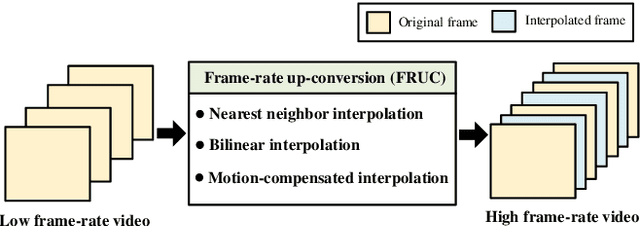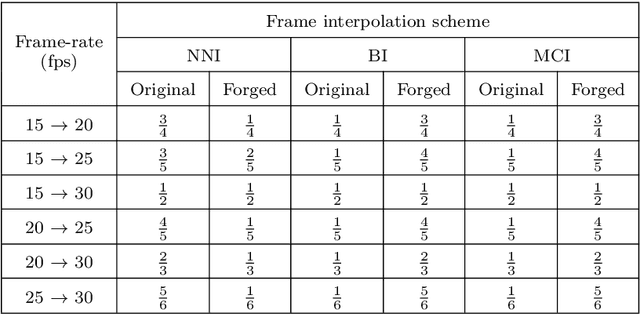Frame-rate Up-conversion Detection Based on Convolutional Neural Network for Learning Spatiotemporal Features
Paper and Code
Mar 25, 2021



With the advance in user-friendly and powerful video editing tools, anyone can easily manipulate videos without leaving prominent visual traces. Frame-rate up-conversion (FRUC), a representative temporal-domain operation, increases the motion continuity of videos with a lower frame-rate and is used by malicious counterfeiters in video tampering such as generating fake frame-rate video without improving the quality or mixing temporally spliced videos. FRUC is based on frame interpolation schemes and subtle artifacts that remain in interpolated frames are often difficult to distinguish. Hence, detecting such forgery traces is a critical issue in video forensics. This paper proposes a frame-rate conversion detection network (FCDNet) that learns forensic features caused by FRUC in an end-to-end fashion. The proposed network uses a stack of consecutive frames as the input and effectively learns interpolation artifacts using network blocks to learn spatiotemporal features. This study is the first attempt to apply a neural network to the detection of FRUC. Moreover, it can cover the following three types of frame interpolation schemes: nearest neighbor interpolation, bilinear interpolation, and motion-compensated interpolation. In contrast to existing methods that exploit all frames to verify integrity, the proposed approach achieves a high detection speed because it observes only six frames to test its authenticity. Extensive experiments were conducted with conventional forensic methods and neural networks for video forensic tasks to validate our research. The proposed network achieved state-of-the-art performance in terms of detecting the interpolated artifacts of FRUC. The experimental results also demonstrate that our trained model is robust for an unseen dataset, unlearned frame-rate, and unlearned quality factor.
 Add to Chrome
Add to Chrome Add to Firefox
Add to Firefox Add to Edge
Add to Edge